
MaXB3 Limits Ethylene Production and Ripening of Banana Fruits
Blog, Plant Physiology, Plant Physiology: News and Views, ResearchAuthor: Sjon Hartman
ORCID: 0000-0002-6709-6436
Plant Ecophysiology, Institute of Environmental Biology, Utrecht University, Padualaan 8, 3584 CH, Utrecht, The Netherlands
[email protected]
Ripening of climacteric fruits such as banana (Musa acuminata), tomato (Solanum lycopersicum), and…

Recognizing Plant Physiology authors: Ruiyan Tao
Plant Physiology, Plant Physiology: Author ProfilesDr. Ruiyan Tao, first author of Light-induced basic/helix-loop-helix 64 enhances anthocyanin biosynthesis and undergoes CONSTITUTIVELY PHOTOMORPHOGENIC 1-mediated degradation in pear
Current position: Postdoc at Unveristy of Cologne, Germany
Education: Ph.D. in Pomology at College of Agriculture…
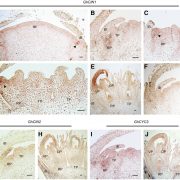
On the Inside: Molecular Regulation of Asteraceae Inflorescence Development
Plant Physiology, Plant Physiology: On The InsideThe reproductive structures of the Asteraceae (the sunflower family), the largest family of flowering plants, are among the most complex within the flowering plants. The species in this family develop head-like inflorescences that resemble flowers. In many Asteraceae flowers, the hermaphroditic disc…
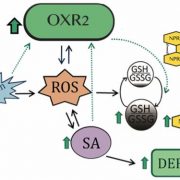
On how to build a larger and healthier Arabidopsis ROSette using a mitochondrial protein (spoiler: reactive oxygen species)
Blog, Plant Physiology, Plant Physiology: News and Views, ResearchJavier Edgardo Moreno
ORCID ID: 0000-0001-9763-5325
Twitter: @JaviMorenoOK
Instituto de Agrobiotecnología del Litoral (UNL-Conicet), Facultad de Bioquímica y Ciencias Biológicas, Universidad Nacional del Litoral
Santa Fe 3000, Argentina
Cellular respiration is at the core…
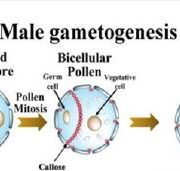
Callose deposition during pollen development
Blog, Plant Physiology, Plant Physiology: News and Views, ResearchMadeleine Seale
University of Oxford
[email protected]
Callose is a cell wall component that is dynamically deposited and degraded during pollen development. Thanks to a new paper investigating pollen formation in cotton (Gossypium hirsutum), we now know that a pollen-specific protein…
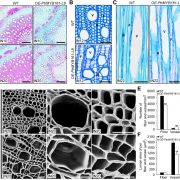
On the Inside: Feedback Regulation of Wood Formation in Poplar
Plant Physiology, Plant Physiology: On The InsideWood formation is controlled by a number of MYB family transcription factors, which may act as transcriptional activators or repressors. Secondary wall associated NAC domains (SNDs) and vascular-related NAC domains are master regulators controlling the expression of downstream transcription factors,…
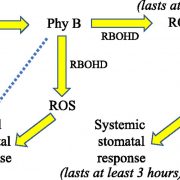
On the Inside: Phytochrome B and Systemic Reactive Oxygen Species Waves
Plant Physiology, Plant Physiology: On The Inside
Several recent studies have revealed that reactive oxygen species (ROS)waves propagate through plants, originating at the treated, stimulated, or stressed local tissue and spreading within minutes to the entire plant. ROS waves regulate and coordinate systemic metabolic, molecular, and physiological…

Plant Physiology welcomes 16 new Assistant Features Editors
Blog, Plant Physiology: Editorials, Pubs PagesAt the beginning of 2018, Plant Physiology initiated a program to introduce several promising early-career scientists to the editorial board and engage their expertise in assessing and writing about research published in the journal. Over the past three years, these scientists brought their passion for…

An evolutionary perspective on LysM receptors reveals conserved mechanisms for microbial signal perception
Blog, Plant Physiology, Plant Physiology: News and Views, ResearchLena Maria Müller
Boyce Thompson Institute
[email protected]
Plants are in constant contact with millions of microbes, which can be pathogenic or establish mutualistic interactions with the plant. One well-studied mutualistic interaction is the nodulation symbiosis of legumes with nitrogen-fixing…

